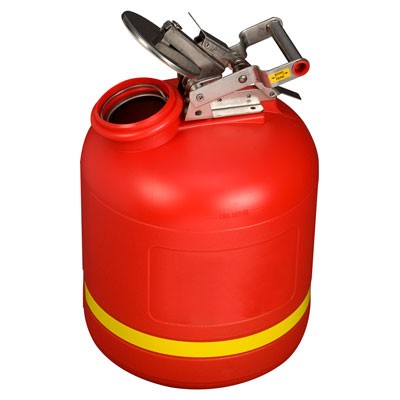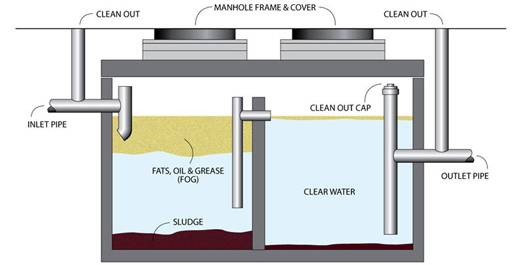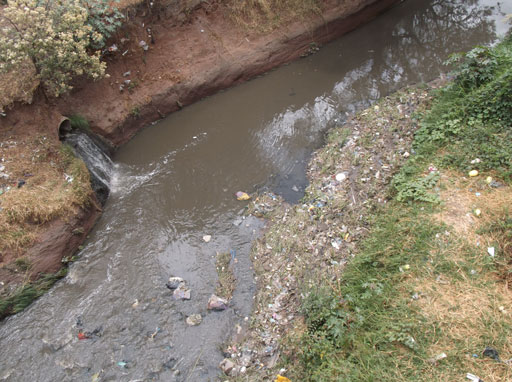Dependable Liquid Waste Disposal Melbourne: Safe and Efficient Providers
Wiki Article
Exactly How Liquid Waste Disposal Functions: An In-depth Introduction of Methods and Technologies Employed

Overview of Liquid Waste Types
The intricacy of fluid waste types demands an extensive understanding of their qualities and implications for disposal. Fluid waste can broadly be classified into a number of types, consisting of commercial, municipal, agricultural, and unsafe waste. Each group exhibits distinctive residential or commercial properties, calling for specific management methods to mitigate environmental and health and wellness dangers.
Industrial liquid waste stems from making procedures and often has a series of impurities, such as hefty metals, solvents, and organic compounds. Municipal fluid waste, mostly comprising wastewater from homes and business facilities, has natural matter, nutrients, and microorganisms (industrial wastewater treatment). Agricultural fluid waste, including runoff from ranches, might contain fertilizers, chemicals, and animal waste, positioning threats to water top quality and ecosystems
Hazardous liquid waste is characterized by its poisoning, sensitivity, or potential to cause harm. Comprehending these diverse liquid waste types is essential for creating effective disposal methods and guaranteeing compliance with ecological policies.
Physical Treatment Techniques

Screening is the preliminary action, where bigger particles and debris are removed from the fluid waste utilizing screens or grates. This procedure shields downstream devices from damage and ensures smoother procedure. Adhering to screening, sedimentation uses gravitational force to separate solids from liquids. In sedimentation containers, much heavier bits work out at the base, forming a sludge layer, while the clarified liquid can be additional treated.
Filtering is an additional important method that involves passing the liquid with permeable products, such as sand or membrane layers, to record smaller fragments. This step boosts the high quality of the liquid, making it appropriate for succeeding treatment procedures.

Chemical Treatment Strategies
Chemical treatment methods are important for properly handling liquid waste, especially in addressing liquified and colloidal impurities that physical approaches may not sufficiently remove. These strategies make use of numerous chemical representatives to counteract, precipitate, or change dangerous materials right into much less damaging kinds.One usual technique is coagulation and flocculation, where chemicals such as alum or ferric chloride are included to promote the gathering of suspended fragments. This process improves sedimentation, enabling much easier removal of the resulting sludge. Furthermore, oxidation procedures, employing agents like chlorine or ozone, are utilized to damage down intricate natural compounds and virus, rendering the waste much safer for discharge or further therapy.
Neutralization is an additional critical method, which readjusts the pH of acidic or alkaline waste streams to neutral degrees, preventing possible damage to downstream systems and the atmosphere. Additionally, advanced oxidation processes (AOPs) use mixes of oxidants and ultraviolet light to break down consistent contaminants, achieving a higher degree of treatment performance.
Organic Treatment Procedures
Organic therapy procedures play an important role in the management of liquid waste by using microorganisms to decompose natural issue and reduce pollutant levels. These processes can be extensively categorized right into anaerobic and cardiovascular therapies, each utilizing particular microbial communities to attain efficient waste deterioration.Aerobic therapy entails using oxygen to facilitate the failure of natural products by bacteria. This procedure is generally applied in activated sludge systems, where oygenation storage tanks provide a helpful atmosphere for microbial growth, resulting in the oxidation of organic pollutants. The resultant biomass can be separated from treated effluent via sedimentation.
On the other hand, anaerobic treatment occurs in the absence of oxygen, depending on various bacteria to damage down natural matter. This approach is especially useful for high-strength waste, as it produces biogas, a renewable energy source, while decreasing sludge production. Technologies such as anaerobic digesters are regularly utilized in industrial and municipal applications.
Both anaerobic and cardio organic therapies not just lessen the environmental effect of liquid waste however likewise assist in source recovery, making them crucial elements of sustainable waste monitoring strategies. Their flexibility, effectiveness, and efficiency sustain their prevalent application throughout various fields.
Arising Technologies in Disposal
Cutting-edge strategies to liquid garbage disposal are swiftly progressing, driven by innovations in technology and an increasing emphasis on sustainability. Among these emerging innovations, membrane layer bioreactors (MBRs) have gotten traction for their capacity to integrate biological therapy with membrane filtering, resulting in top quality effluent that can be recycled in various applications. have a peek at this website MBRs allow smaller sized impacts and much more reliable procedures contrasted to conventional systems.An a fantastic read additional promising growth is making use of anaerobic food digestion incorporated with nutrient healing innovations, which not only treats fluid waste but likewise generates biogas and recovers valuable nutrients like nitrogen and phosphorus. This twin benefit improves source efficiency and reduces ecological influence.
Furthermore, advanced oxidation procedures (AOPs) are being taken on for the deterioration of complex natural toxins. These techniques utilize powerful oxidants and stimulants to damage down pollutants at the molecular degree, offering an extremely reliable remedy for tough waste streams.
In addition, the integration of man-made intelligence and artificial intelligence in waste administration systems is optimizing functional effectiveness and predictive maintenance, leading to reduced costs and improved environmental compliance. These innovations show a substantial shift towards even more lasting and efficient fluid garbage disposal practices.
Conclusion
To conclude, reliable fluid garbage disposal necessitates an extensive understanding of various techniques and modern technologies. The assimilation of physical, chemical, and organic therapy approaches guarantees the effective monitoring of varied waste kinds. Furthermore, the emergence of innovative innovations improves therapy effectiveness and advertises sustainability in waste monitoring methods. By continually advancing these methodologies, it comes to be feasible to address the growing obstacles connected with fluid waste, ultimately adding to environmental management and resource recuperation.Fluid waste disposal is an essential facet of ecological monitoring, requiring a read what he said detailed understanding of different techniques and modern technologies customized to various waste types. Fluid waste can generally be classified into a number of types, including commercial, municipal, agricultural, and hazardous waste. Agricultural liquid waste, consisting of runoff from ranches, might have plant foods, pesticides, and pet waste, posturing dangers to water top quality and environments.
Numerous physical therapy methods play an essential duty in handling liquid waste effectively - industrial wastewater treatment.In verdict, reliable fluid waste disposal requires a thorough understanding of different techniques and technologies
Report this wiki page